The human brain can be a tricky thing to understand. People did not even believe the brain was the center of thought at first, in fact, people like Aristotle believed that occurred in the heart. This could be why some early head/brain surgeries were so horrific. Yet we eventually knew the importance of the brain, but doctors still did not understand the brain as much as they do today. This led to several lobotomies taking place. These lobotomy victims would never be the same again. Portuguese neurologist António Egas Moniz was the first to do the surgical procedure.
He would go on to share the Nobel Prize for Physiology or Medicine in 1949 for the procedure as well. It involves severing connections in the prefrontal cortex of the brain. This includes the anterior part of the frontal lobes. The idea is that it could be used to treat several mental disorders, but the side effects are drastic. It literally changes a person completely, sometimes not even fixing the original problem. This controversial procedure took place all over the world for decades until it was eventually stopped. The stories of the victims of the procedure are often overlooked, so we’re going to discuss them. Let’s get started!

ADVERTISEMENT – CONTINUE READING BELOW
Patricia Moen: The Woman Who Just Wanted To Start Living Again
- When She Was Lobotomized: 1962
- Age: 36
- Likely Mental Disorder: Bipolar Disorder/Depression
A name you’ll likely see a lot on this list is Dr. Walter Freeman, who did more lobotomies than anyone it seems. One of his biggest success stories is likely Patricia Moen. She had been married to her husband for 13 years when all of a sudden she began crying constantly. She had no explanation as to why. Doctors in the 1960s were just then starting to uncover mental disorders and how they operated. We would not see a revolution in this field until the 1980s and 1990s.
At one point, Patricia’s despair had gotten to her so much that she tried to commit suicide by downing an entire bottle of pills. She survived thankfully, but Dr. Freeman suggested she get a lobotomy. He did warn her that she might end up catatonic from the procedure, still not very safe at the time. Patricia did it anyway and did feel different after Dr. Freeman worked on her brain. She claims she went home and “just started living again.” It’s sad to think that her disorder never needed such an operation.
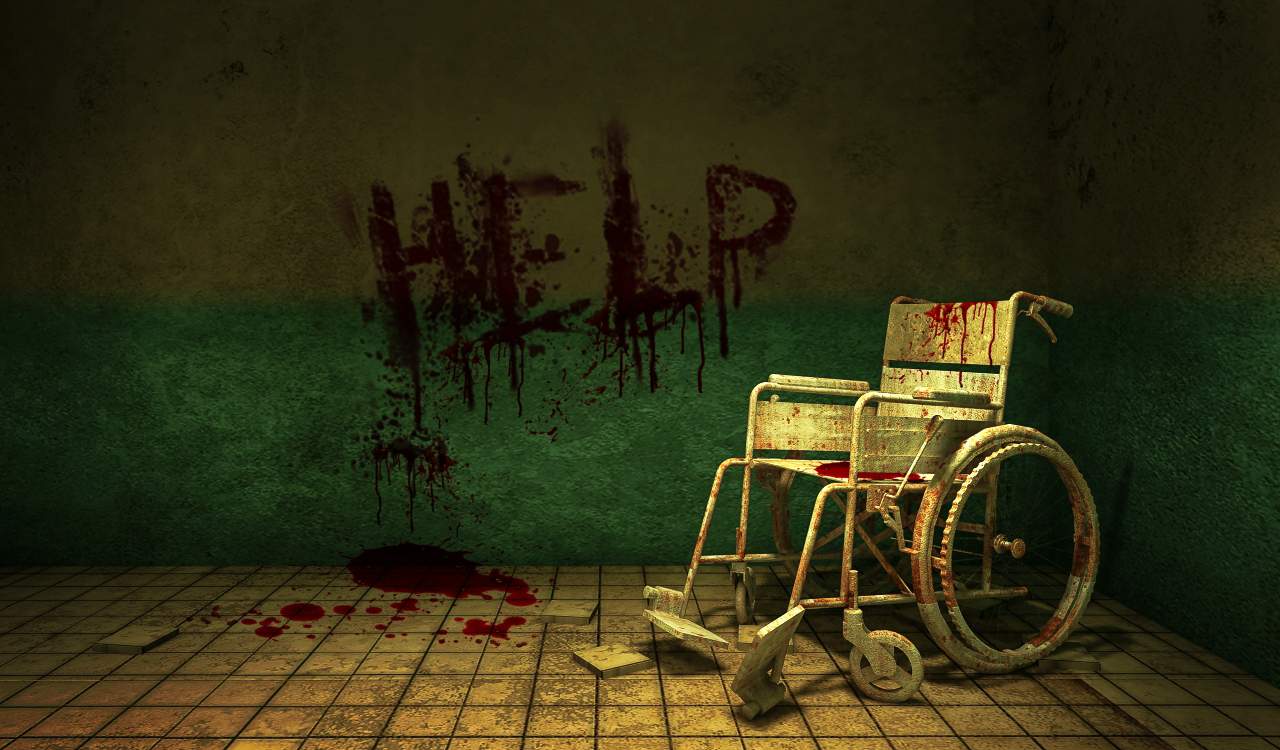
ADVERTISEMENT – CONTINUE READING BELOW
Genevieve Pilarski: The Woman Who Proved Life Is A Farce
- When She Was Lobotomized: February 18, 1955
- Age: 36
- Likely Mental Disorder: Potentially None At All
Potentially one of the worst stories in the history of mental procedures must be Genevieve Pilarski. She was essentially forced to have a mental disorder by the very people who should prevent it. In 1944, she was admitted into the Manteno State Hospital in Illinois after she and her parents disagreed about where she should live after college. Doctors who saw her did not see any signs of problems, with one remarking that there were “no signs of active pathology.” Yet they did not release her, in spite of proving there was no mental disorder to treat.
Instead, the hospital staff forced her to undergo hydrotherapy, putting her in and out of ice water. Pilarski underwent these types of useless and harmful “therapy” for years. By May of 1953, she had undergone a total of 187 electric shock therapies. Then on February 18, 1955, she was subjected to what was essentially the early lobotomy. It left her mute and completely dependent on commands for functioning. Lobotomy victims like this would ideally be reported but it never was, so for the next 45 years, she was passed around nursing homes and mental institutions until her death in 1998 at 79.

ADVERTISEMENT – CONTINUE READING BELOW
Dave Rubinstein: The Rocker Who Couldn’t Catch A Break
- When He Was Lobotomized: Late 1980s
- Age: Mid-20s
- Likely Mental Disorder: None, Had A TBI
The 1980s were filled with political issues among Americans, which mixed in quite well with the music scene. The rise of early grunge and punk music was growing in popularity. Reagan Youth was one of the bands that mixed hardcore political beliefs with pit anthems and anti-racist concepts. The lead singer of this band, Dave Rubinstein, had a drug problem like other rockers of his era. Dave’s drug of choice? Heroin. Which ended up getting him into a fight one day. This fight caused a terrible head injury that resulted in him needing a lobotomy to recover. Like some lobotomy victims, Dave did recover.
Yet like most, he was never the same. He did not go back to singing or writing for his band but rather ended up going right back into his heroin addiction big time. But this man could not catch a break. In June of 1993, his mother passed in a freak accident when she was hit by a car driven by his father. Then a serial killer named Joel Rifkin killed Dave’s girlfriend, Tiffany Bresciani. This all sent Rubinstein over the edge. In 1993, he took his own life. He was only 28 years old. Lobotomy victims like Dave dealt with a perfect storm of terrible in his young life, which is sad to see.

ADVERTISEMENT – CONTINUE READING BELOW
Anita McGee: The New Mom Guided Down A Terrible Path
- When She Was Lobotomized: 1953
- Age: N/A
- Likely Mental Disorder: Postpartum Depression
When you hear of a person dealing with depression, especially postpartum depression, you think about many potential treatments. Your first instinct is not, hey, let’s cut open her skull and remove part of her brain. Well, that’s unless your name is Dr. Walter Freeman (told you he’d be around). Anita McGee was dealing with postpartum depression after having her daughter in 1953. The reason a person goes through this is due to a major drop in hormone levels that can cause various symptoms. Yet we knew of this issue well before the 1950s.
Counseling was the main therapy for it, as medications were not advanced enough yet to treat this issue. Most of the time, it would go away or become normalized depression for women. Yet McGee underwent three lobotomies for it, which left her completely different and messed up. She had to be institutionalized for the rest of her life, where she underwent electroshock therapy. McGee’s daughter later said: “I personally think that something in Dr. Freeman wanted to be able to conquer people and take away who they were.” She’s not wrong, as McGee was just one of many lobotomy victims that Freeman worked on.

ADVERTISEMENT – CONTINUE READING BELOW
Patient H.M.: The Heavily Studied Man That Couldn’t Form New Memories
- When He Was Lobotomized: September 1, 1953
- Age: Unknown
- Likely Mental Disorder: TBI, Seizure Issues
It is rare that a person is only ever known by initials, but that was the case of Patient H.M. Real name Henry Molaison, he was hit by a cyclist, which cracked his skull. The issue would go on to cause seizures lasting for up to 40 seconds at a time. He went to get help for his issue, ending up with Dr. William Scoville. He had been experimenting with “fractional lobotomies” at the time. Knowing the normal lobotomy was risky, this concept ideally would allow them to keep their personality. In 1953, Scoville used a hand crank and drill saw to remove bone from each of H.M.’s eyes.
He then removed a few portions of the brain and Molaison seemed to recover. Patient H.M. now only had 2 seizures per year, maximum. He also had a big jump in his IQ but was sadly now unable to form new memories. He also no longer recognized time the way others did due to the loss of a portion of his hippocampus. Five minutes could pass like 30 seconds for him. He could not live on his own and had to take on odd jobs, having to ask often what he was doing. After H.M. passed away at 82, his brain was removed and sliced into 2,401 pieces to be studied and mapped down to individual neurons.
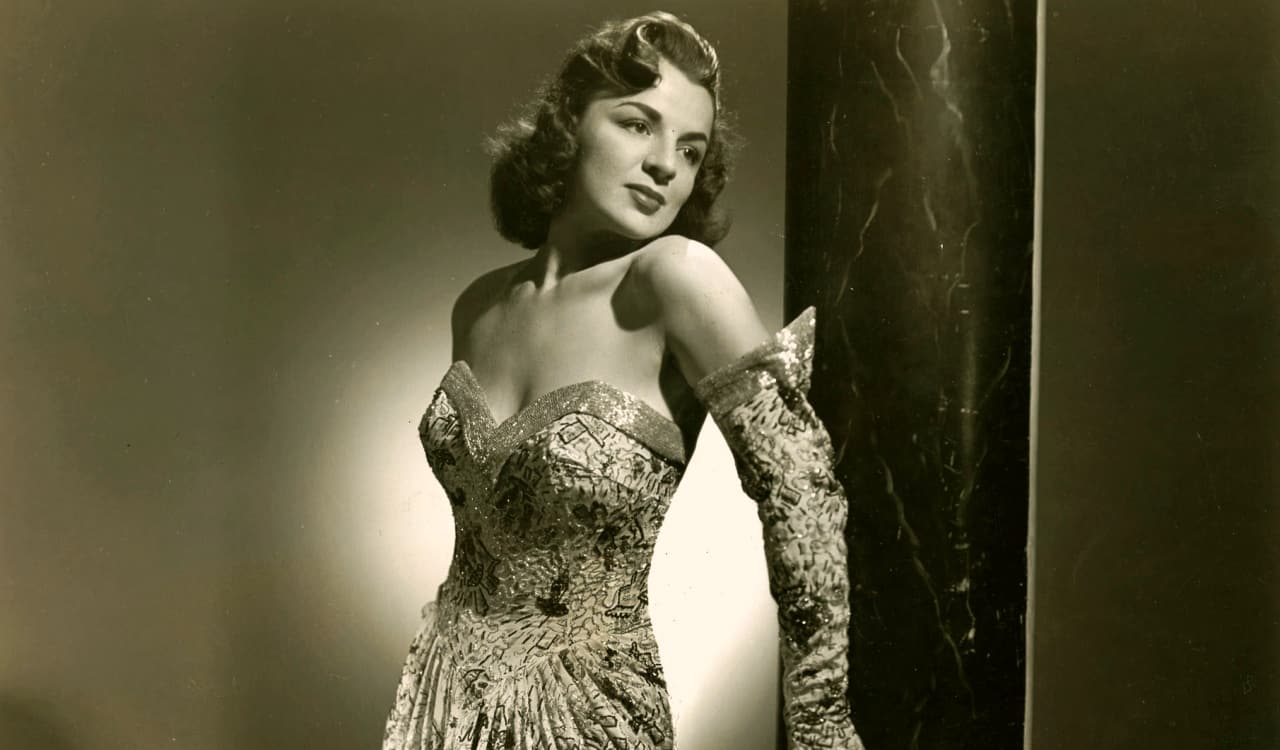
ADVERTISEMENT – CONTINUE READING BELOW
Alys Robi: The Calm Singer With Magnetic Eyes
- When She Was Lobotomized: 1952
- Age: 29
- Likely Mental Disorder: TBI, Triggered Bipolar Disorder & Depression
Alys Robi was a brilliant singer from Canada who could belt some of the highest notes you ever heard. Her high-voltage renditions of Tico Tico and You Belong To My Heart were beloved by her native Canadians. In her own obituary, she was described as temperamental with magnetic eyes. However, Robi had been lobotomized years prior in 1952. This occurred after a terrible car accident in 1948 that left her scarred mentally. It also sent her into various wild mood swings at random.
Alys went to get treatment for her mental ailment, but her own decisions were not considered over her father’s. He wanted to lobotomize her while Alys did not want it. A lot of mental institutions have gotten away with issues like this due to lack of oversight and the assumption that mental patients cannot always consent to things. She spent 5 years in a mental institution, but unlike many lobotomy victims, Robi was released from the institution. She ended up crediting the lobotomy for her newly calm demeanor. Robi lived into her 80s and even got back into music, wrote autobiographies, and had movies made about her.

ADVERTISEMENT – CONTINUE READING BELOW
Sigrid Hjerten: The Depressed Artist Who Revolutionized European Art
- When She Was Lobotomized: March 24, 1948
- Age: 62
- Likely Mental Disorder: Severe Depression
Sigrid Hjerten was a brilliant modernist painter who studied with Henri Matisse in Paris in the early 1900s. The Swedish painter was a well-known artist in Europe by the 1910s, when her work began hitting exhibitions throughout Europe. She even had a goal of opening her very own exhibit for her work. Sadly, she started to experience mental illness issues at random. Her psychosomatic nature was not helpful for her, her family, nor her career. She buried the ordeal and made a bit move back to her hometown of Stockholm in 1932. Sigrid then had a mental breakdown and battled severe depression.
She had periodic stays in her local asylum for the next four years. Her husband then divorced her. Sigrid did open up her exhibit in 1936 to high critical acclaim, but also stopped painting. Her repeated depression led her to get help at the Beckomberg Psychiatric Hospital where she underwent many therapy issues and was a diagnosed schizophrenic. Her doctors highly suggested a lobotomy in that period. It is unknown if she was forced or chose to do it, but her lobotomy procedure led to her death. There were 4,500 lobotomy victims from 1944 to 1966 in Sweden alone. Most of them women!

ADVERTISEMENT – CONTINUE READING BELOW
Gay People In The United States
- When They Were Lobotomized: 1930s to 1977
- Ages: Multiple
- Likely Mental Disorders: NONE
While homosexuality is slightly more accepted in the United States compared to what it used to be, this was completely normal across Europe, Asia, and Africa for years. Bisexuality was more common than anything else. Eventually, whether by idiocy or religious belief, homosexuality became a horrible thing to society. Leading to some believing it had to be a mental disorder and one that a person could be broken from. That led to the formation of the institution dubbed “Gay Auschwitz.”
Gay Rights Pioneer Harry Hay mentioned that if your homosexual lifestyle took you to state prison, you had two choices as a “cure.” Castration or Lobotomy. Thousands of people underwent forced castration or lobotomies. Dr. Freeman (yes, him again) believed like many at the time that homosexuality was a sign of schizophrenia. Something he felt could be cured by a lobotomy, of course. The Atascadero State Prison became known as Gay Auschwitz by San Fransico natives, where the institution was located. Thousands of gay people became lobotomy victims here sadly.

ADVERTISEMENT – CONTINUE READING BELOW
Eva Perón: Don’t Cry For Her Argentina
- When She Was Lobotomized: Sometime Between May – July Of 1952
- Age: Around 33
- Likely Mental Disorder: NONE
Eva Perón was the wife of former Argentinian President, Juan Perón. She became internationally famous due to the play and film Evita, a show made about her life written by Andrew Lloyd Weber. Initially not interested in politics, she was a major figure in the political world by 1948. Sadly, Eva was diagnosed with cervical cancer in 1950. Chemotherapy for the illness was rough and painful. She would die from the disease just 2 years later in 1952. Yet things get weird from here. In 2011 a neurosurgeon at Yale University reviewed x-rays of her body following her death and found she had a lobotomy.
It was dated sometime between May of 1952 and her death. A nurse who assisted with the procedure confirmed it happened and that it was against her consent. Eva continued her outspoken political movement even while sick. In fact, Eva supported the idea that labor unions should create an armed militia. Her cancer seemed to be ramping up her more violent movements, and that led many to worry. Juan decided she needed to be lobotomized in an effort to stop her unpredictable behavior and ideology. Yet she stopped eating after the operation. Combined with her cancer, she passed at just 33.

ADVERTISEMENT – CONTINUE READING BELOW
Alice Hood Hammatt: The First Of Many
- When She Was Lobotomized: 1936
- Age: 63
- Likely Mental Disorder: Severe Anxiety
Alice Hood Hammatt holds the distinction of being the very first person to receive a prefrontal lobotomy in the United States of America. Guess who was behind it. You know it was Dr. Freeman! This also included Dr. James Watts. Hammatt was not some crazed young mental patient in need of mental help to have a long, healthy life. Rather, Alice was 63 years old. She was born in 1873. Since lobotomies were still in their infancy by 1936 when she was lobotomized, the doctors felt the risk was worth it.
If they messed it up, oh well, it was a 63-year-old woman. Life expectancy was only 56 to 60 in the 1930s. Her operation lasted about an hour, and she initially recovered. But sadly began having convulsions months after the surgery. Yet the reason for getting lobotomized, her anxiety, had been reduced by the lobotomy and kept her out of mental institutions. Her husband remarked that she was acting more normal than before. Alice later contracted pneumonia and passed away at 68. Some lobotomy victims were assisted by the procedure. However, the side effects could differ wildly.
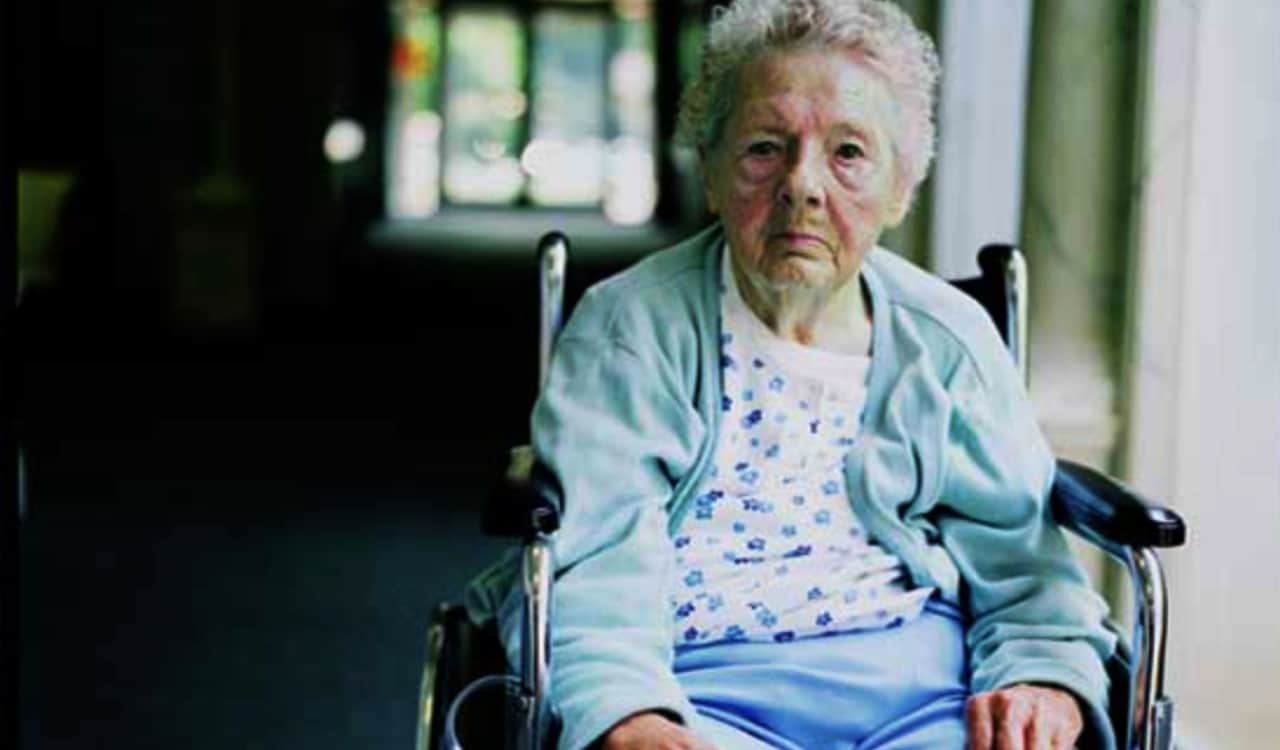
ADVERTISEMENT – CONTINUE READING BELOW
Sallie Ellen Ionesco
- When She Was Lobotomized: 1946
- Age: 29
- Likely Mental Disorder: Borderline Personality Disorder and/or Severe Depression
Another first for Dr. Freeman and the world, Sallie Ellen Ionesco was the first to experience the transorbital lobotomy. It is often referred to as the “ice pick lobotomy.” Performed in 1946, Freeman felt that Ionesco could benefit from the lobotomy operation due to her mental issues that would be treated far different today. At the time, the 29-year-old Ionesco was a housewife and mother who consistently tried to kill herself. The violent suicidal tendencies were horrible to see.
She wanted anything to help. This led Dr. Freeman to the Ice Pick Lobotomy. He knocked Sallie out using electroshock, then inserted the ice pick above her eyeball, banging it through her eye socket into her brain. He then swirled it around to sever neural connections. Sallie never had violent suicidal episodes after the operation. However, all lobotomy victims have some issues from the operation. For Sallie, it was her memory function. In spite of this, she lived out a relatively normal life until she passed in 2007.
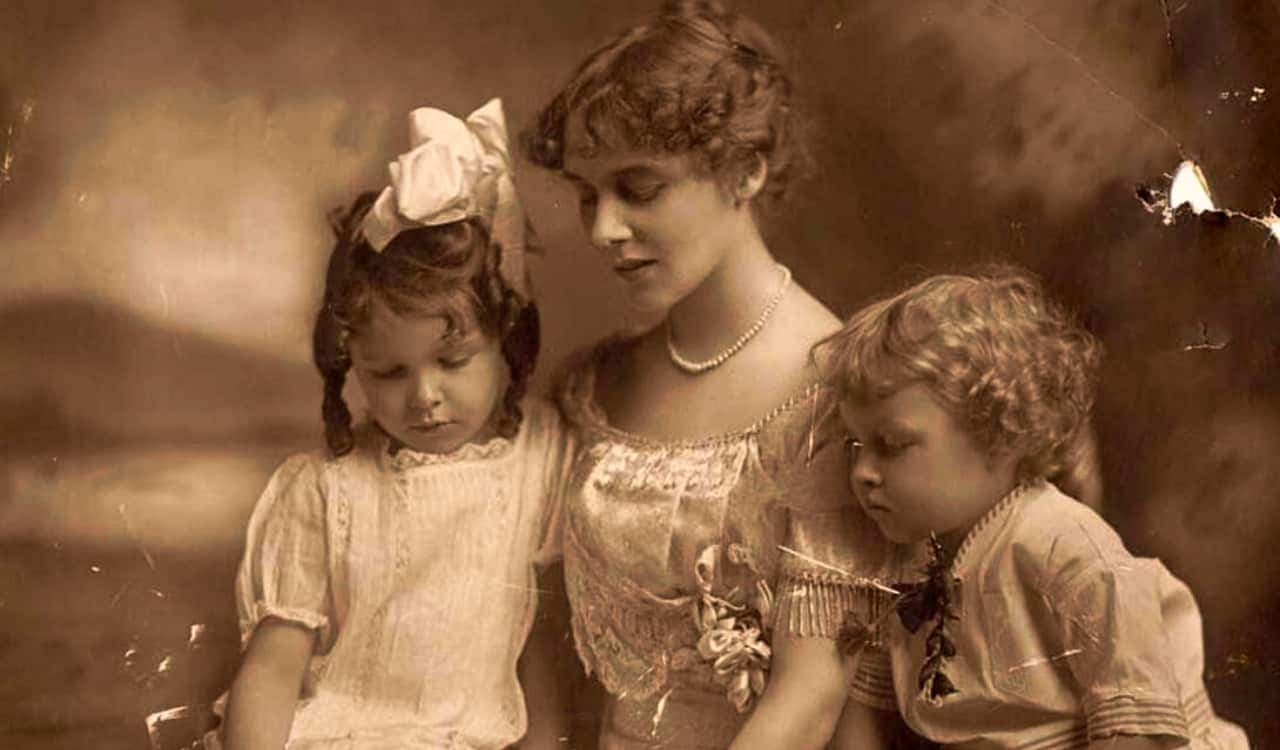
ADVERTISEMENT – CONTINUE READING BELOW
Rose Williams
- When She Was Lobomized: 1943
- Age: Around 24
- Likely Mental Disorder: Severe Depression, Bipolar Disorder, Schizophrenia
Rose Williams happens to be the older sister of the infamous Tennessee Williams. While her brother was quite popular as a writer, his sister was creative herself. Yet she was plagued with severe depression and schizophrenia. Her brother claimed she was sweet and genuine, more than any other person he ever knew. Many even claim she was her brother’s muse for his writing. Rose once described her depression in 1926, writing to her grandmother that she did not know what the problem was.
She was just nervous constantly, on some days she couldn’t hold a glass to take her medicine in. She stayed in bed all day and still feels weak. By 1943, Rose began lashing out in manic episodes which made her open to getting a frontal lobotomy. Sadly, Rose became one of the shining examples of lobotomy victims that prove how unsafe the procedure is. Her lobotomy reduced her to a near-catatonic state. Rose remained institutionalized until her passing in 1996, but thankfully in a high-end version that her brother paid for.
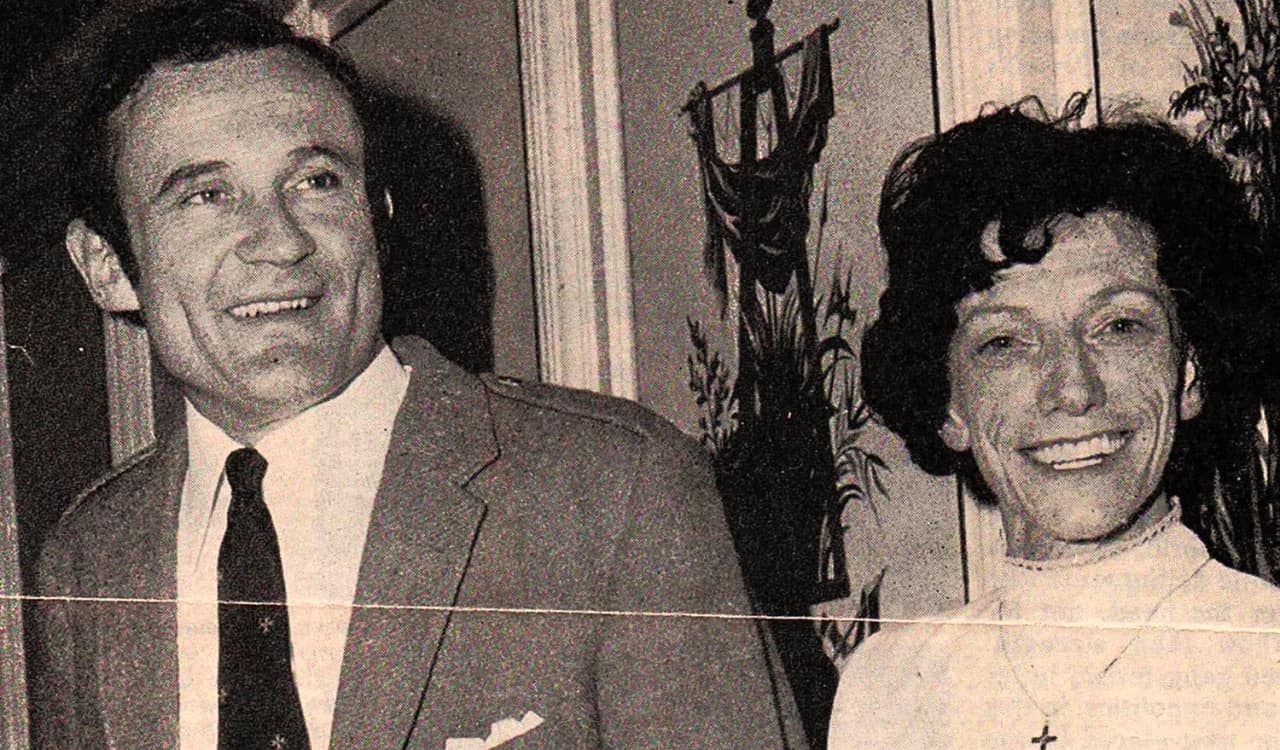
ADVERTISEMENT – CONTINUE READING BELOW
Randolph Stewart: The Misdiagnosed 13th Earl Of Galloway
- When He Was Lobotomized: 1952
- Age: 23
- Likely Mental Disorder: Autism
Randolph Stewart was the son of the 12th Earl of Galloway. The younger Randolph was diagnosed with schizophrenia at a young age, yet many believe he was likely more autistic than anything else. In spite of this, his doctors made a jump to their earlier diagnosis and put him through insulin coma therapy. Something they assumed could help with schizophrenia in his time. Stewart’s behavior was “difficult.” Many autistic people can be hard to understand. This led his parents to take him to be lobotomized at 23 years old. He’d spend the next 15 years of his life in the mental wing of the Crichton Royal Infirmary.
Stewart met his wife by 1975 whom his parents strongly discouraged him to marry. By 1978, his father passed and the Earl title fell to him, though he was written out of his father’s will. Encouraged by his wife, Stewart claimed his seat at the House of Lords. Although history will say he was not great in the role. The 13th Earl left the role with a continually deteriorating mental state, causing him to be violent. He attacked members of the public a few times as well as his own wife. Stewart later claimed he was appalled by his actions. Due to the couple never having a child, the Stewart line of Earls ended with the 13th.

ADVERTISEMENT – CONTINUE READING BELOW
Frances Farmer: The Lobotomy Many Deny Ever Happened
- When She Was Lobotomized: In The Mid-1940s
- Age: Around 29 or 30
- Likely Mental Disorder: Bipolar Disorder, Depression
The case of Frances Farmer, an American actress, was a weird one. Dr. Freeman claims to have operated on Farmer, even claiming to have photographic proof. The Hospital it was claimed to have been performed denied it happened, as well as Farmer’s own doctor. Yet many believe it did take place. Frances was not very similar to her former self after the alleged lobotomy. Her personality and overall demeanor was the complete opposite of her previous self. Previously, Frances was a successful actress in the 1930s. She was a known rebel with a drinking problem that studios let pass due to her success.
That was until the 1940s when Paramount Studios suspended her. In 1942, she was ticketed for violating wartime blackout regulations. This led to multiple events where she acted erratically with police, judges, and security guards. It led to Farmer being sent to a mental institution where she was diagnosed as manic-depressive, schizophrenic, etc. Multiple misadventures later, some making national news, she met Freeman for the now infamous lobotomy. Unlike other lobotomy victims, Frances returned to her former career and had moderate success. At least until memories were triggered of her past, causing issues.

ADVERTISEMENT – CONTINUE READING BELOW
The Oklahoma Three: Women Affected By Medical Ignorance
- When They Were Lobotomized: Between 1950 -1954
- Ages: 28, 32, 43
- Likely Mental Disorders: NONE
While we’d love to give you an exact name for all three women involved in this series of lobotomies, we cannot. In fact, that is part of the mystery here. Unlike others on this list, these women were not lobotomized for severe mental disorders or even an alleged one. They were each lobotomized for gastrointestinal issues. Five patients total underwent lobotomies to treat ulcerative colitis between 1950 and 1954. It took place at the University of Oklahoma School of Medicine. The two male patients died within a year of the lobotomy while the three women survived.
All three were housewives ages 43, 28, and 32 at the time of their lobotomy. Each suffered from their colitis issue anywhere between 6 to 20 years. It is unknown what happened to the women. The only thing really known is that the third woman of 32 had her first child in October 1955, and nothing more. Why treat colitis with a lobotomy? Many doctors were under the impression something went wrong in toilet training. Since many had depression, doctors assumed depression caused colitis, rather than looking at them in reverse. Many lobotomy victims came from this assumed theory that was literal nonsense.

ADVERTISEMENT – CONTINUE READING BELOW
Josef Hassid: The Violinist Who Died To Get His Memory Back
- When He Was Lobotomized: 1950
- Age: 26
- Likely Mental Disorder: Bipolar Disorder, Severe Depression, Dementia
Josef Hassid was a notable musician, considered to be one of the greatest stringed instrument players of his era. By the late 1930s, the Polish musician was all over Europe. He even performed on radio broadcasts for the BBC. Yet Hassid struggled in his music due to random lapses of memory both during and after performances. By mid-1941, Josef experienced severe and at times violent mood swings. His memory issues only became worse, especially when he could not recognize friends. His father persuaded him to see a doctor which the brilliant violinist did, where he was diagnosed with schizophrenia in 1941.
It led to stays in mental institutions where Hassid refused to cooperate with doctors. Eventually, he was transferred to Northampton where he was exposed to insulin shock therapy, induced coma, and electroshock therapy. They claimed this worked and released Josef in May of 1942. Hassid was declared insane by December that year. He’d be readmitted and later lobotomized in the Fal of 1950. Sadly, Josef developed an abscess that became infected and turned into meningitis. It would lead to his death in November of 1950. Many lobotomy victims of Josef’s time died during and soon after their operations.

ADVERTISEMENT – CONTINUE READING BELOW
Dick Meredith: The Case That Exposes The Entire Mental Industry
- When He Was Lobotomized: 1950s
- Age: Around 24
- Likely Mental Disorder: Autism
The lobotomy of Dick Meredith is often believed to be one of the premier cases where you can point to lobotomies being overused. Showing relatively mild mental issues, he was part of a growing trend in the 1940s and 1950s where lobotomy was used as a catch-all concept for mental disorders. He displayed some anxiety issues but based on conversations with his sister, medical professionals believe Dick had a form of autism or was at least on the spectrum. His high school even urged for him to be institutionalized due to his behavior and intelligence.
His IQ test resulted in a 67, which puzzled his family. In spite of the score, Dick was quite bright. He was eventually put into institutions and exposed to electroshock therapy. Without permission from Dick or his family, the institution he was with performed a lobotomy on him. They merely sent a letter to his family after it was done. Like many lobotomy victims, Meredith had many more issues after his operation. He could not carry on a conversation well, nor could he even live on his own. Dick’s family claimed the lobotomy “took the life out of him” and he was basically “a zombie.”

ADVERTISEMENT – CONTINUE READING BELOW
Ricky Ray Rector: The Man Who Lobotomized Himself
- When He Was Lobotomized: 1981
- Age: 31
- Likely Mental Disorder: Narcissistic Personality Disorder, Psychopathy
Differing from every other case in our list, Ricky Ray Rector actually lobotomized himself. We’ll explain. Rector had issues with the law his entire childhood and by 17, he was a career criminal. He was in trouble for disorderly conduct, grand larceny, forgery, and even assault and battery. Yet what truly stood out was a major issue in March of 1981 when he shot 5 people with a pistol. It all began when he and some friends were refused entry into a club due to not being able to pay the $3 cover. Rector decided to open fire with one victim dying almost instantly.
He hid out at his sister’s place until a patrol officer who had known Rector since he was a kid came up. Ricky initially consented to be arrested but once the officer came inside, Rector shot him too. He then turned the gun on himself and shot a bullet into his left temple but survived. Surgeons had to remove three inches of his frontal lobe to save him, effectively lobotomizing him. In spite of clear evidence of a mental disorder even before shooting himself, Rector was sentenced to death. He was killed by the state of Arkansas via lethal injection in 1992.
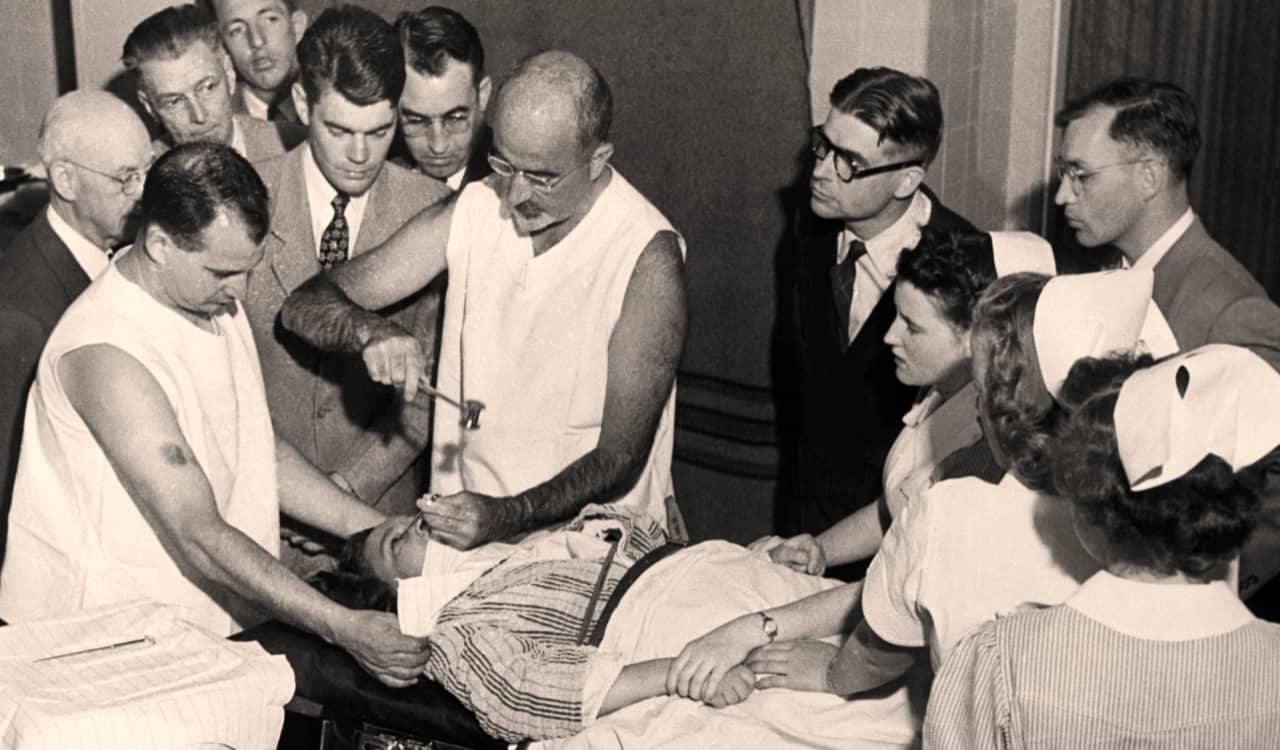
ADVERTISEMENT – CONTINUE READING BELOW
Helen Mortensen: The Last Freeman Lobotomy Ever
- When She Was Lobotomized: 1946 (first), 1956 (second), 1967 (third)
- Age: Unknown
- Likely Mental Disorder: Unknown
Helen Mortensen holds a major distinction in that she was the last lobotomy that Dr. Martin Freeman ever performed. It took place in 1967, but Helen was not some newer patient. She was actually one of Freeman’s first 10 transorbital lobotomy patients from 1946. She had suffered a relapse in her mental state and that led to a second operation in 1956. Mortensen had some productivity from the previous lobotomies and wanted a third in 1967.
However, in doing this he severed a blood vessel in Mortensen’s brain. That led to Helen passing away three days later. As a result of the issue, the hospital he performed surgical procedures at decided to revoke his surgical privileges. He retired soon after. Freeman had performed around 3,500 lobotomies in 23 different states. 2,500 of them involved his ice pick version of the procedure. Giving rise to literally thousands of lobotomy victims, none of which needed the procedure.
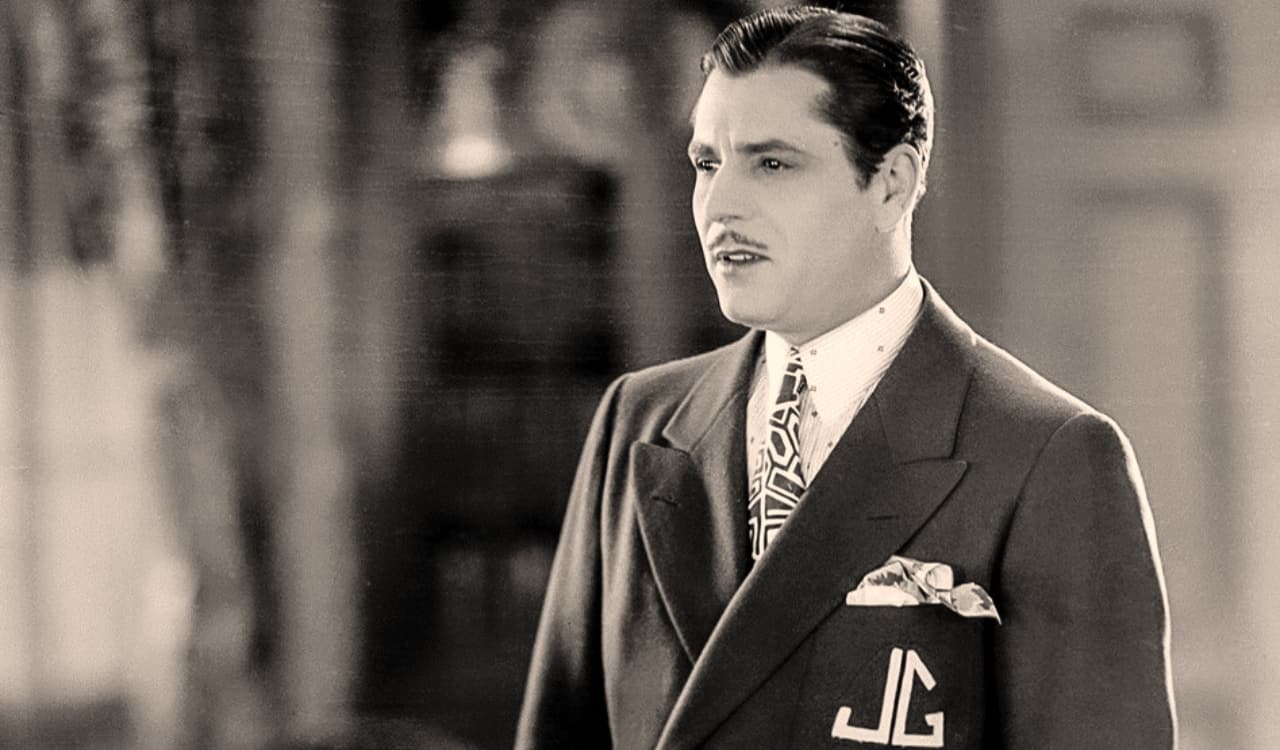
ADVERTISEMENT – CONTINUE READING BELOW
Warner Baxter: The Actor Who Would Do Anything To End His Pain
- When He Was Lobotomized: 1951
- Age: 62
- Likely Mental Disorder: Severe Pain, Arthritis, Likely Nerve Disorder
Warner Baxter is a notable actor from the 1930s and 40s. He even won the second-ever Academy Award for Best Actor. Of course, Baxter worked alongside many top legends of his time including Ginger Rogers and Clark Gable. In fact, he was among the most in-demand and highest-paid of his time. Yet he eventually starred in B-List movies in secondary roles due to problematic issues with arthritis, which left him in a lot of pain. Nothing could help the pain truly. Very little was offered back then. But pain is technically a signal from our brain and that means it can be helped.
Baxter began doing quack medical concepts to help. Nothing worked. He was still open to things, even those on the fringe, leading to a voluntary transorbital lobotomy in 1951. His doctors and family warned him against it. Yet the procedure did help relieve him from pain. However, it also caused him to essentially lose his memory. Warner could no longer recognize family, friends, or even his doctors. He also ended up having seizures and convulsions. In May of 1951, just months after his lobotomy, he died of pneumonia. It is said he developed it from improper post-surgical care. Lobotomy victims like Baxter were common.
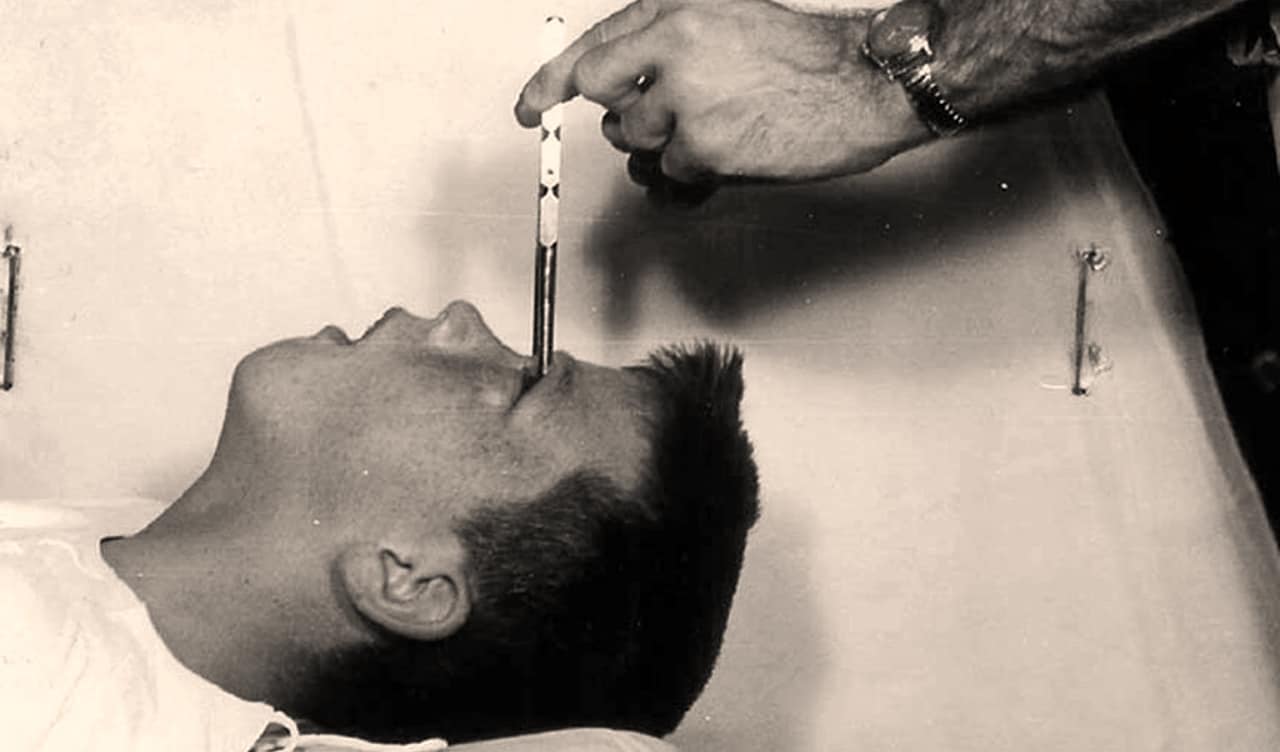
ADVERTISEMENT – CONTINUE READING BELOW
Howard Dully
- When He Was Lobotomized: December of 1960
- Age: 12
- Likely Mental Disorder: Potential Personality Disorder
Howard Dully might be the most famous male lobotomy case ever. This is likely due to why he was lobotomized and the photos that came from it. He’s also one of the few living that could describe the after-effects to the current generation. Dr. Freeman saw Howard when Dully was just 12 years old. He was defiant and “savage-looking” according to his doctor’s notes on him. He claimed that there were mental issues and that he is trying to test his father and stepmother. Dr. Freeman claimed Dully does not react to love or punishment.
Freeman wrote “he objects to going to bed but then sleeps well. He does a good deal of daydreaming but when asked about it he says “I don’t know.” Howard turns his room’s lights on when there is broad sunlight outside.” Freeman performed a lobotomy on Dully in 1960, causing his entire nature to change. Howard just sat, grinning and offering nothing according to his stepmother. Dully still suffers memory loss and claims ever since the operation, he has felt like a freak. This is nothing new from lobotomy victims, but still sad to see.

ADVERTISEMENT – CONTINUE READING BELOW
Rosemary Kennedy: The Beauty Paralyzed By Her Father’s Greed
- When She Was Lobotomized: November 1941
- Age: 23
- Likely Mental Disorder: Dyslexia, Potentially Bipolar Disorder
Now for the most famous lobotomy case, we have Rosemary Kennedy. She is the sister of former U.S. President John F. Kennedy. The worst part about her case is that she did not have some sort of crazed or violent mental issue. She dealt with dyslexia. This is when a person has trouble comprehending specific numbers or letters, causing a problem with learning as well as obviously reading and math skills. Rosemary was misunderstood by her parents as well as her school.
Knowledge of her condition was minimal, so doctors claimed she was developmentally disabled. Her father was a politician himself and it is claimed that his political aspirations led him to consent to his 23-year-old daughter getting a frontal lobotomy procedure. She erupted into tantrums when she did not get her way, which could embarrass her father. The lobotomy left her partially paralyzed on her left side as well as mute. We hope her father’s political aspirations were worth making his daughter one of the many lobotomy victims of the 1940s.
Sources:
National Public Radio
New Yorker
New York Times
Live Science
John F. Kennedy Library Foundation
IMDb
A&E Network
The Oklahoman
NZ Herald
Mayo Clinic
